About UMB History, highlights, administration, news, fast facts
- Accountability and Compliance
- Administration and Finance
- Center for Information Technology Services
- Communications and Public Affairs
- Community Engagement
- Equity, Diversity, and Inclusion
- External Relations
- Government Affairs
- Philanthropy
- Office of the President
- Office of the Provost
- Research and Development
- University Counsel
- Office of the President
- Administrative Officers
- Deans
- Boards of Visitors
- Faculty Senate
- Staff Senate
- University Counsel



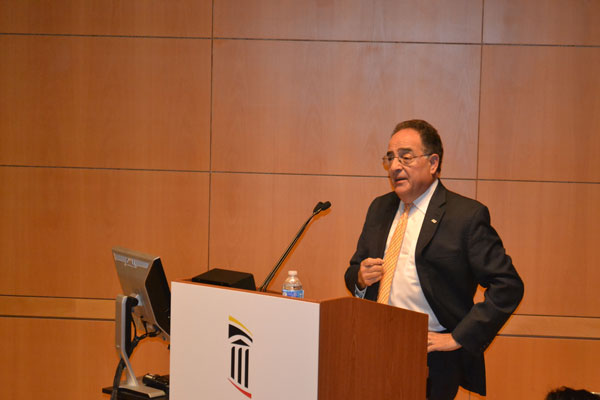 So that’s what we did that day, and I sat right here and listened for an hour and a half as our panelists, and then some of you, talked about racism, poverty, and disinvestment as it relates to the community in which we’re a part of, West Baltimore. We talked about what we are doing and what we can do to help restore equity, opportunity, and justice for those who have been denied a fair chance.
So that’s what we did that day, and I sat right here and listened for an hour and a half as our panelists, and then some of you, talked about racism, poverty, and disinvestment as it relates to the community in which we’re a part of, West Baltimore. We talked about what we are doing and what we can do to help restore equity, opportunity, and justice for those who have been denied a fair chance.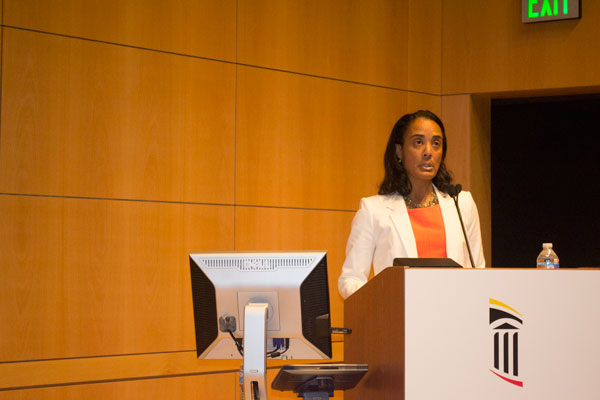 We’ve made headway on a lot of these tactics, and we’re gearing up to implement more of them this year. I hope you’ll take time to look at the
We’ve made headway on a lot of these tactics, and we’re gearing up to implement more of them this year. I hope you’ll take time to look at the 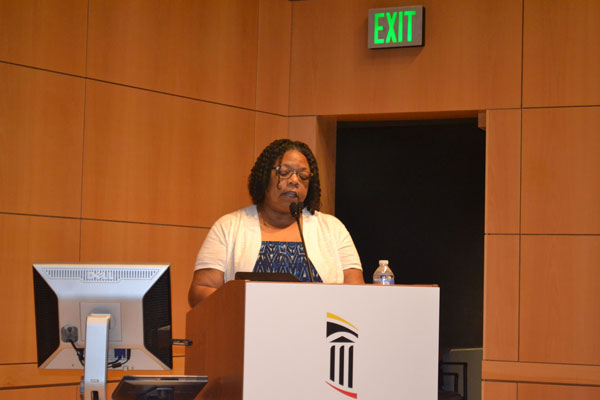 The final set of recommendations concerns community service and engagement. The first recommendation is to support the Office of Community Engagement in building a comprehensive, coordinated community engagement strategy for UMB. The Office of Community Engagement was established last summer to better coordinate the services we provide for our neighbors and to more clearly articulate to students, faculty, and staff where community engaged scholarship and service will have the greatest impact.
The final set of recommendations concerns community service and engagement. The first recommendation is to support the Office of Community Engagement in building a comprehensive, coordinated community engagement strategy for UMB. The Office of Community Engagement was established last summer to better coordinate the services we provide for our neighbors and to more clearly articulate to students, faculty, and staff where community engaged scholarship and service will have the greatest impact.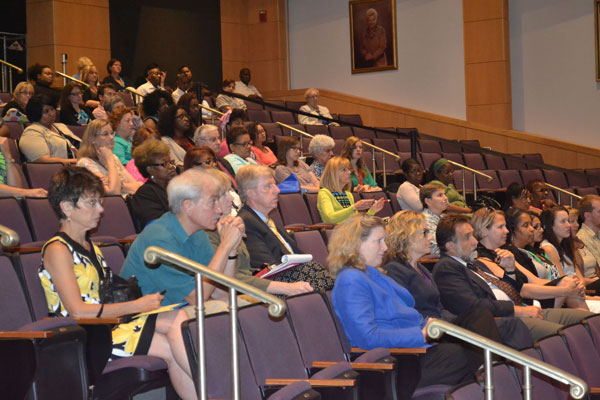 And so before we send out these students for community engagement, we should orient them to the demographics of the city, the politics of the city, the neighborhoods of the city, the needs of the city. We also support a coordinated community engagement strategy that would include things like a Day of Service, which the University System is participating in, and ways to encourage other people in the institution to be involved in community service and engagement.
And so before we send out these students for community engagement, we should orient them to the demographics of the city, the politics of the city, the neighborhoods of the city, the needs of the city. We also support a coordinated community engagement strategy that would include things like a Day of Service, which the University System is participating in, and ways to encourage other people in the institution to be involved in community service and engagement.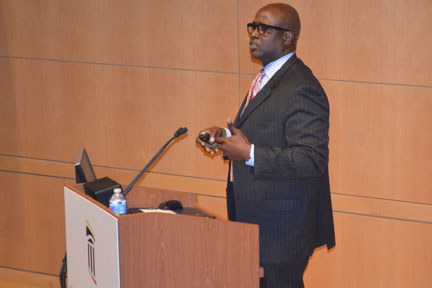 Another key recommendation, and this one too is already in the works, is establishing an Extension Center in the neighborhood. This is where we would engage very richly with the community, provide services in consultation with the community, support the community, and help build programs that empower the community and strengthen our relationship with the community.
Another key recommendation, and this one too is already in the works, is establishing an Extension Center in the neighborhood. This is where we would engage very richly with the community, provide services in consultation with the community, support the community, and help build programs that empower the community and strengthen our relationship with the community.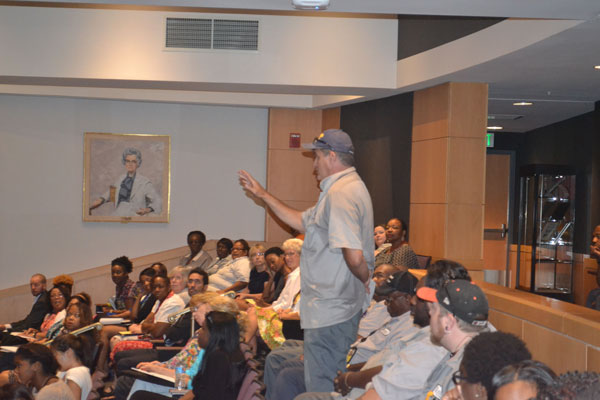 Comment: I know your first name’s Jay, and I know your first name’s Roger, but I call you Dr. Perman and Dr. Ward out of respect. I call Mr. Rowan Mr. Rowan out of respect. Behind your name is a title and a degree that you earned. I work in the multi-trade shop. I’m a bricklayer by trade, and I earned my apprenticeship. My parents were immigrants. They taught me how to work with a shovel and in my department, that word respect is real important. In my department I see ‘I-I-I’. As a University and as a community, it should be ‘we’.
Comment: I know your first name’s Jay, and I know your first name’s Roger, but I call you Dr. Perman and Dr. Ward out of respect. I call Mr. Rowan Mr. Rowan out of respect. Behind your name is a title and a degree that you earned. I work in the multi-trade shop. I’m a bricklayer by trade, and I earned my apprenticeship. My parents were immigrants. They taught me how to work with a shovel and in my department, that word respect is real important. In my department I see ‘I-I-I’. As a University and as a community, it should be ‘we’.